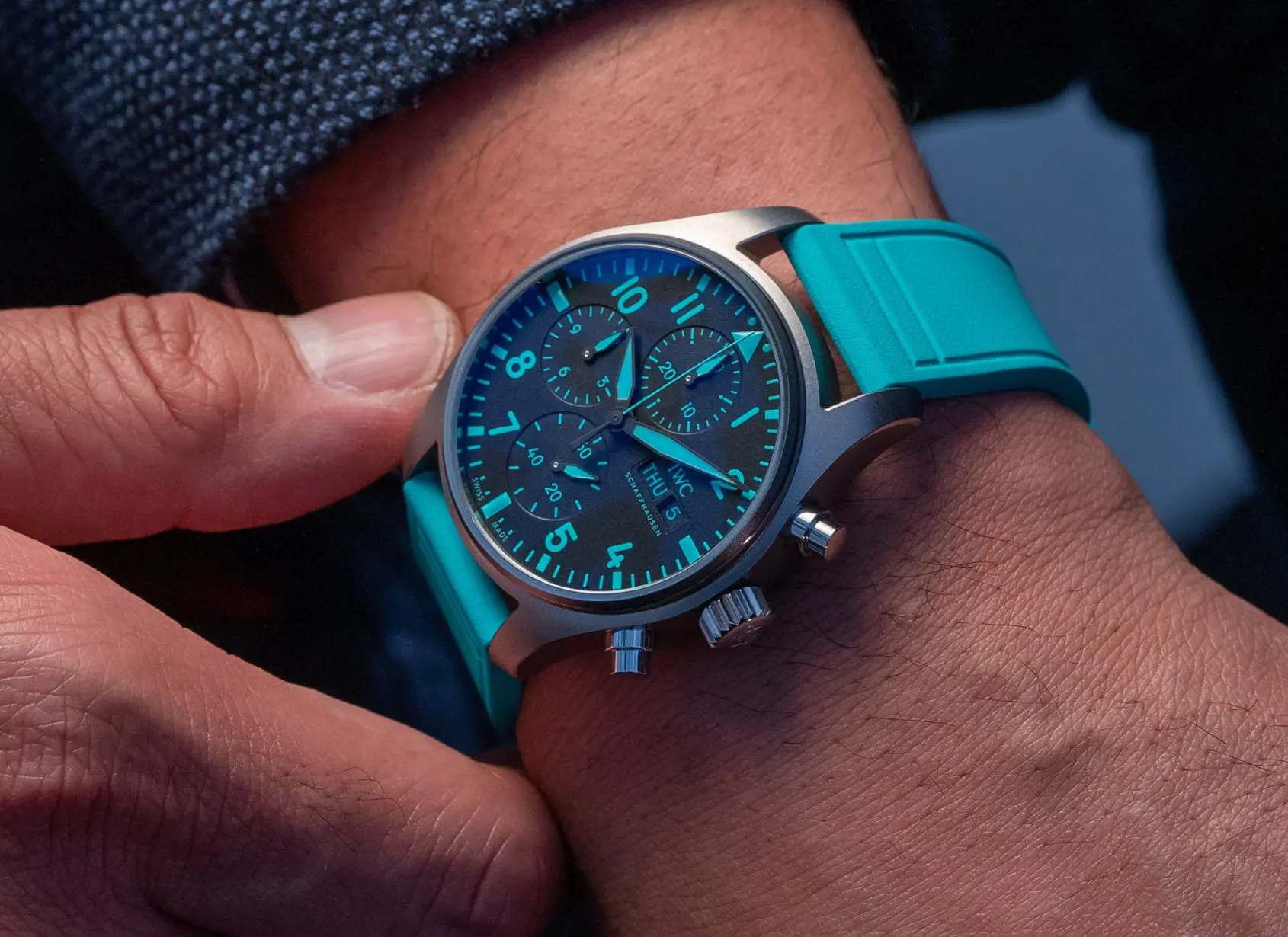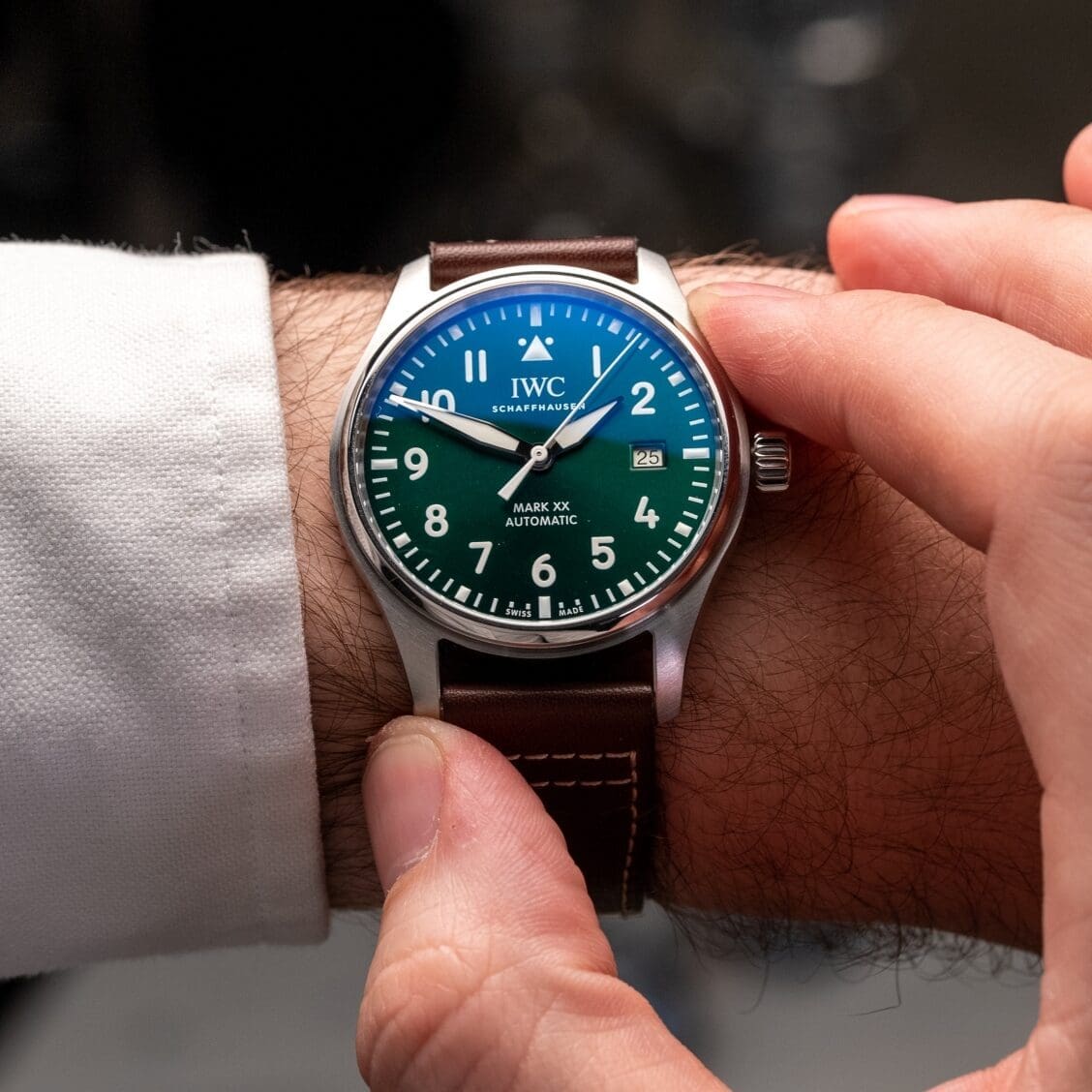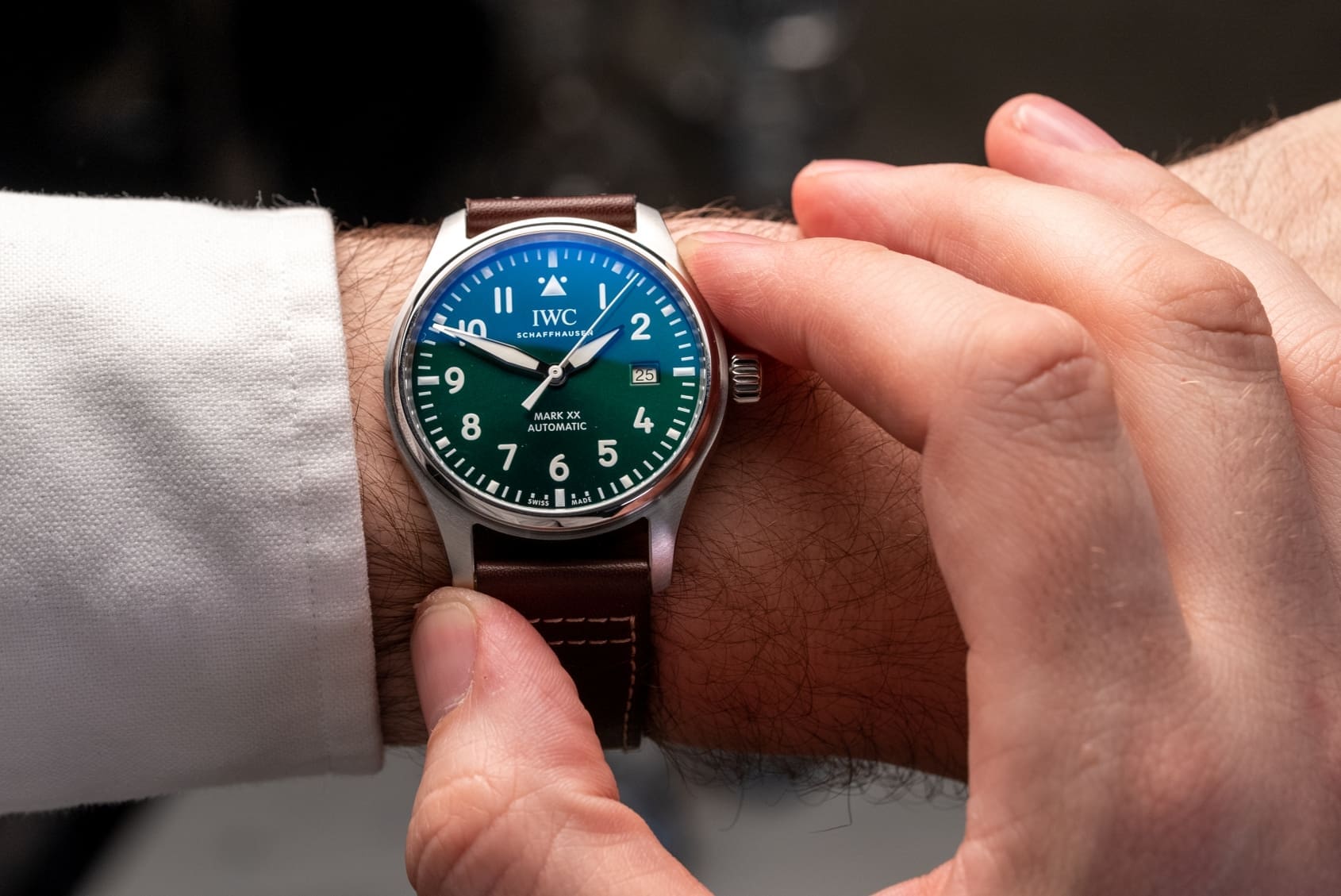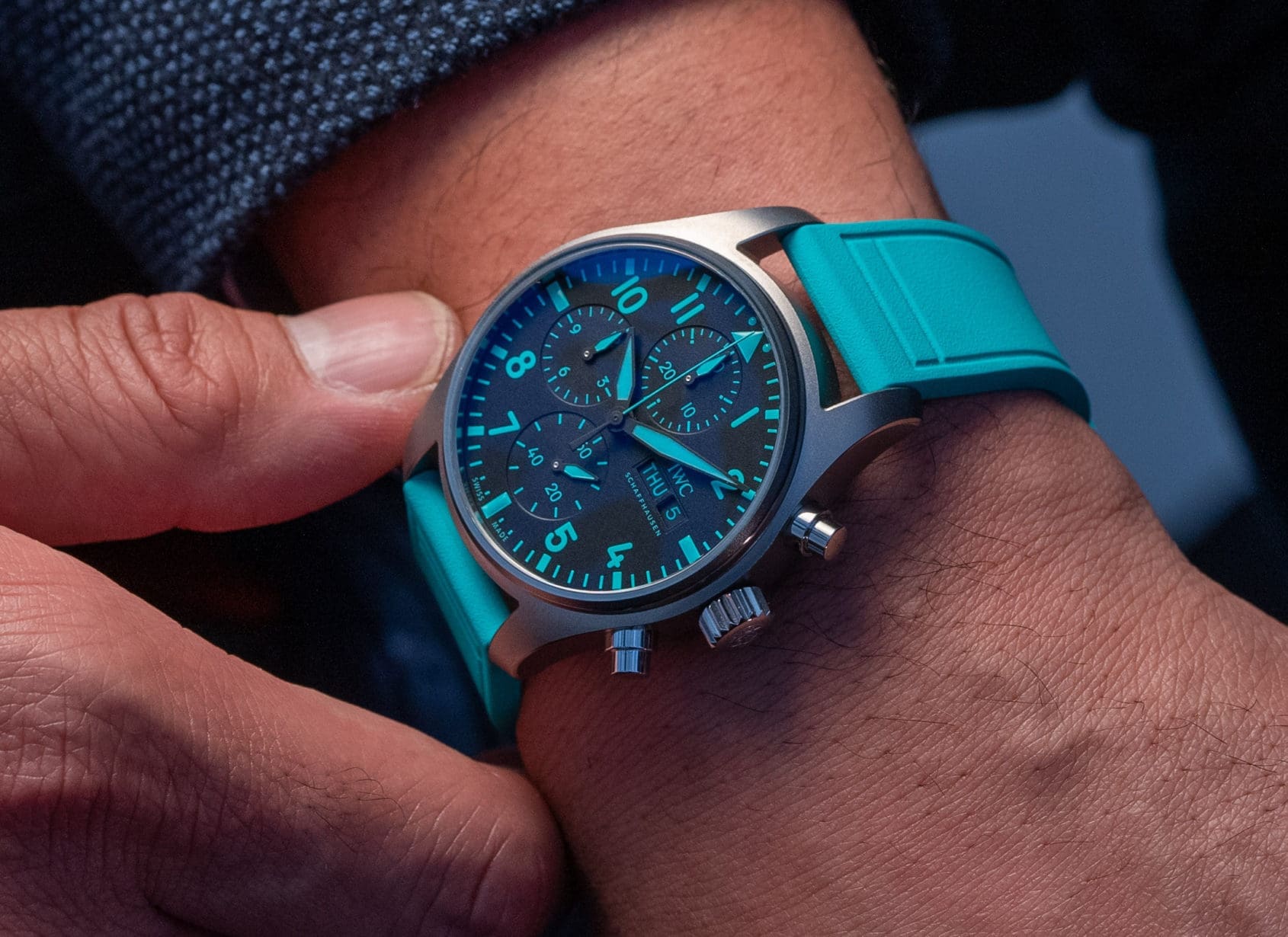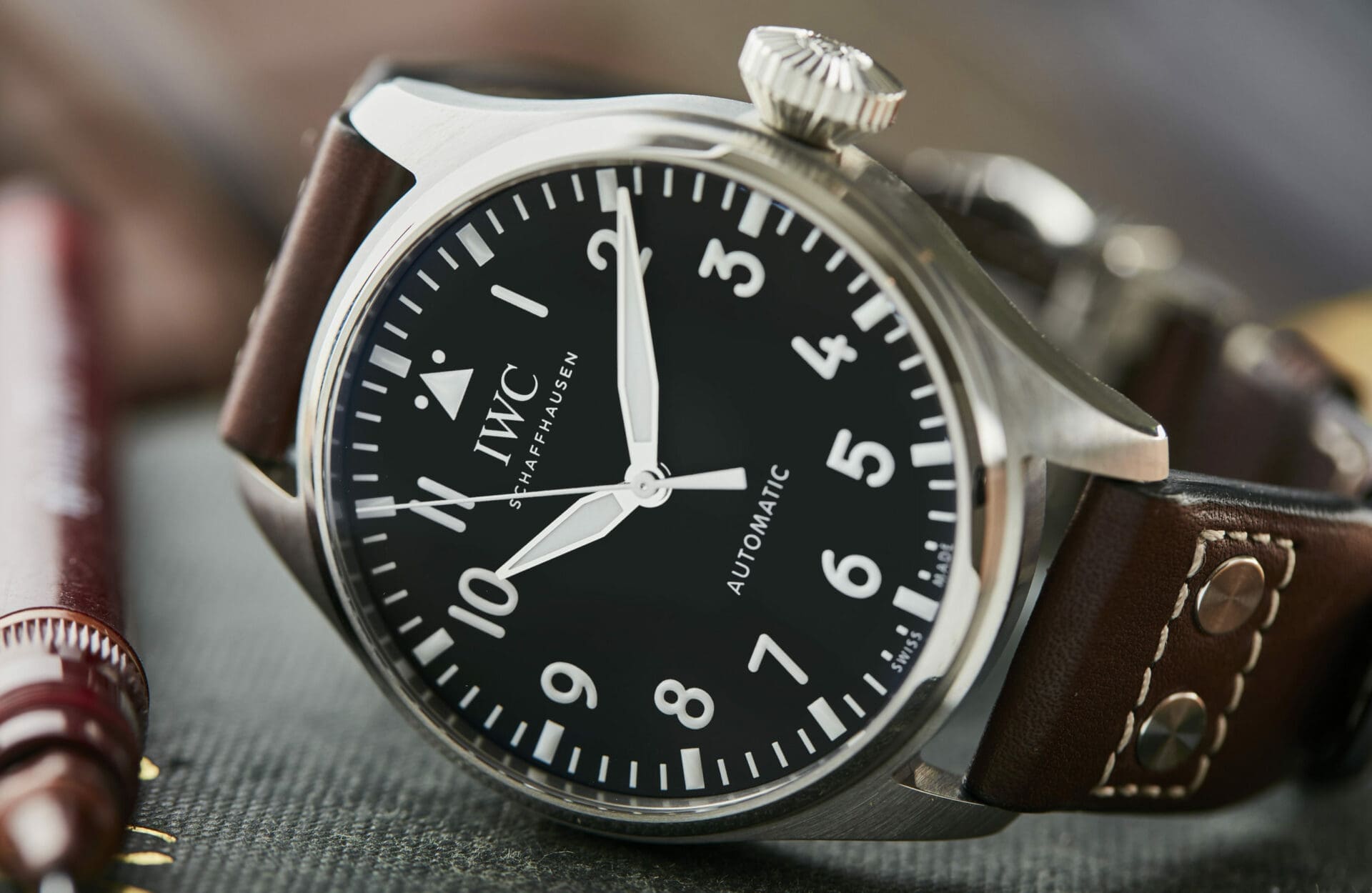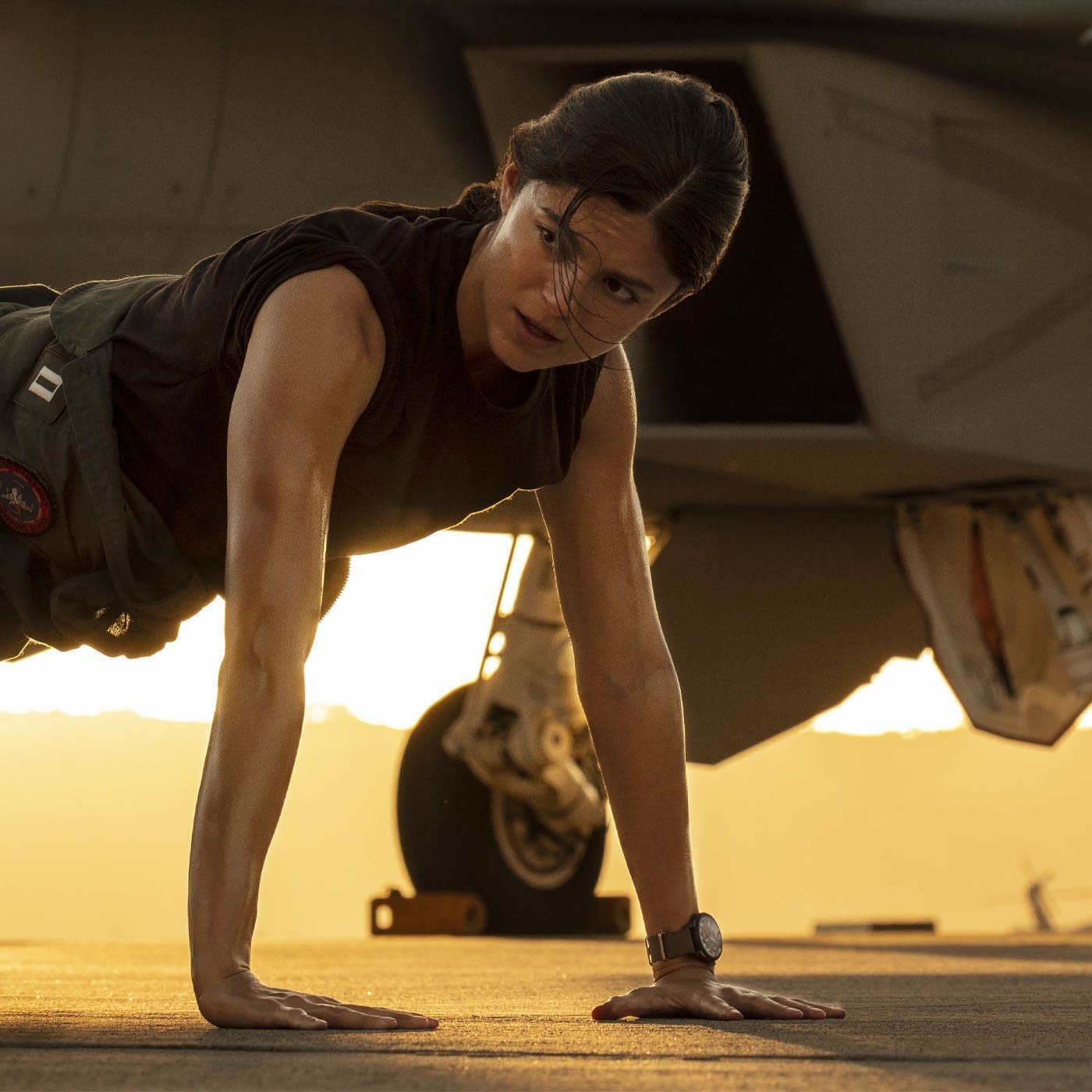Big Watches, Small Wrists Part III: Can I pull off a pilot’s watch?
Kylie Lloyd-WyattWhen I was young, just like many other kids, I dreamed of being a fighter pilot. Perhaps it was the infectiously catchy Kenny Loggins song that I imagined playing in the cockpit whilst dog-fighting with my friends at high speed, or maybe it was my dream of having a legitimately cool call-sign, “Elektra” perhaps. Whatever it was, the allure of an adrenaline-soaked life at Miramar with all its high-tech, rugged looking gadgets and afternoon volleyball games caught my attention.
Even now, I’m taken by the speed and supersonic boom of stealth fighters as they practice manoeuvres over where I often holiday, while getting near enough to the Australian Formula 1 track to feel the roar of the engines under my skin is a complete buzz. Of course, all these factors are synonymous with IWC Pilot or flieger watches and are a big reason for their ongoing appeal.
The darker side
But to really understand why flieger watches are sizable, let’s take a step back from the giddy world of Hollywood and professional racing and lean into one of horology’s darker sides. Flieger watches were developed as tools for aviation and war. The most iconic flieger formats in IWC’s popular Mark, Petit Prince and Big Pilot collections is called the Type A flieger and was designed by German forces for its Luftwaffe pilots during World War II. Five watchmakers, including IWC were consigned by the German forces to make Type A (simple 12 hour dial) and Type B (more complex 24 hour dial) flieger watches. A sparse dial in matte black with high contrast painted, lumed indices and 12 o’clock arrow were specially designed to be highly legible in high and low light.
Legibility was also the main goal in sizing the watch cases up. Flieger watches issued to Luftwaffe pilots were a massive 55mm in diameter, generally contained a pocket watch movement and were worn on the wrist outside the flight suit. The rationale was simple; the larger the watch dial, the larger the text and, in turn, the better the legibility. Legibility is, after all, crucial in high stress, time critical situations, where a pilot’s decisions could mean life or death. The oversized crown, now a famous feature of the Big Pilot collection, also served an important function in allowing easier adjustment and winding whilst wearing flight gloves.
Though history serves us a bitter pill, there is no denying the timeless genius of the flieger design, which despite its history remains deservedly relevant and highly desirable today. The dial layout and colour contrast of both A and B Type watches provides intuitive and highly legible timekeeping whilst being aesthetically well proportioned and balanced. Its rugged yet clean-lined good looks impart a masculine aesthetic that few other designs can rival.
Gear up
With a history lesson up our collective sleeve, I can confidently say that just like Navy compatriots Panerai, IWC pilot watches are meant to be oversized and as such it is completely appropriate to wear them that way in our modern world regardless of wrist size. I went to test this hypothesis at my local IWC boutique.
Though there are a few lines in the Pilot collection, I focused on the Mark XX, Pilot’s Chronograph and Big Pilot series’. Of course, the 36mm Pilot is a shoe-in for small wrists!
The Mark
The Mark XX released at the end of 2022 skipped number XIX to significantly upgrade its specs. When compared to its predecessor the Mark XVIII, the in-house movement is tricked up with a whopping 120 hours of power reserve and the 40mm case now has a decent 100m of water resistance, all without astronomical price increases. Though already relatively thin for a tool watch at 10.8mm, for us petite types, the most important change is a reduction in the lug length, bringing this beauty down to a much more approachable 49.2mm lug-to-lug. This seemingly small but important change rings true in the wear, with the lugs graciously curving down to create a comfortable fit that though big, doesn’t overpower my 5 ½ inch wrist.
Chronograph
Where the Mark series is perhaps seen as more approachable overall, the chronographs are known for being both thick and large in wear, two features that are intimidating for small wrists. After all, 43mm has been the prevailing case size in modern references. Thankfully, in 2019, IWC released the chronograph in 41mm with a 50mm lug-to-lug and since then have gradually expanded the number of dial and material options with these dimensions. Though smaller than the usual chronographs in the Pilot collection, the specs are still daunting, so I was surprised by how well the steel version I tried fitted. Though long, the lugs curve down nicely to hug the wrist and the positioning of the strap inboard of the lugs allows the strap to be pulled directly down. My only criticism was that the 14.5mm thick case sat perhaps a little precariously on my wrist, though I must say the striking stylings of the Mercedes AMG Petronas version might just make me forget all my misgivings. In all seriousness though, I imagine a lighter IWC proprietary ceretanium option would limit if not completely solve this issue. At present, only the 41 Top Gun comes in ceretanium but I am hoping that IWC expand their successful Lake Tahoe, Mojave and Woodland colour schemes to include the 41mm segment.
Big Pilot
That brings us to the biggest of them all; the Big Pilot, so named for its oversized crown. First released in 2002 in 46mm this watch is an homage to the behemoths of old so is meant to be oversized on the wrist. In 2021, however, IWC downsized the case to 43mm for a more ergonomic wearing experience. I sense a recurring theme here and I’d like to think that perhaps IWC caved in to the lobbying of us smaller wristwatch wearers. Nonetheless, even at 43mm it remains a sizable slab for someone like me and with a lug-to-lug of 53mm is not for the faint of heart. On my wrist it does wear very large and top-heavy, so I’d suggest this is probably for someone with a wrist that’s over 6 inches. But if you’re eager, despite it’s unfortunate 21mm lug width, this watch is a strap monster and would wear incredibly well on a NATO. The racing green version I tried was, after all, spectacular.
Welcome to flight school
So, despite yours and my hesitations, hopefully we all appreciate that, at least in my opinion, size is no barrier to entry into the IWC Pilot squad. Whether you’re looking for something to wear to your next game of volleyball or flight mission or are simply looking for an impeccably designed and crafted tool watch to add to your collection, the IWC Pilot series has something right for you.




